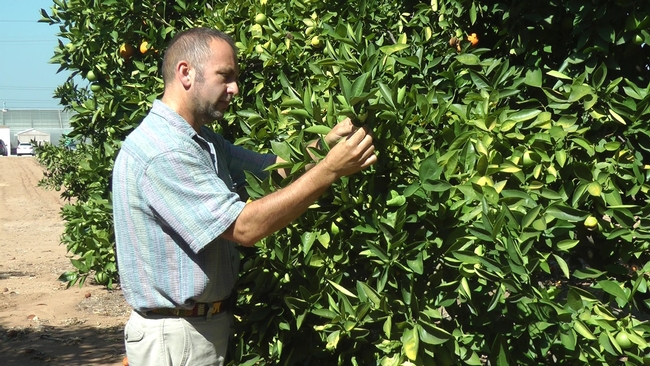Introduction of new invasive pests into California seems to be increasing, reported Todd Fitchette in Western Farm Press. The story was based on presentations at the recent professional crop advisors convention in Anaheim by UC Cooperative Extension specialists Mark Hoddle and UC Riverside entomology professor Richard Stouthamer.
Before 1989, Hoddle said, California saw about six new pest invasions per year. The number has risen to about 10 per year, and the cost amounts to about $3 billion annually.
Asian citrus psyllid, a relatively recent invader in California, has farmers particularly worried because of the pest's ability to spread the lethal bacterial disease huanglongbing in citrus. In late 2011, Hoddle's lab began releasing a natural enemy of the psyllid he collected in the Punjab, Pakistan, a stingless wasp called Tamarixia radiata.
According to the Western Farm Press article, Hoddle is now studying a second natural enemy of ACP - Diaphorencyrtus aligarhensis - in quarantine at UC Riverside.
Stouthamer is studying another troublesome invasive pest in California, the polyphagous shot hole borer. The pest attacks many tree species that shade California streets, landscapes and parks; their greatest threat to agricultural production appears to be in avocados.
At the meeting, Hoddle said there is a growing and vocal minority of ecologists who believe invasive species are not such a serious problem, Fitchette wrote.
“They think we should just relax and let them install themselves in the environment and do whatever they like,” Hoddle said. “I think that's a wrong viewpoint to be taking with a lot of these organisms.”
